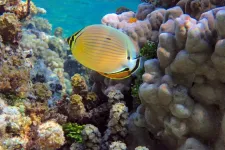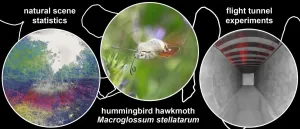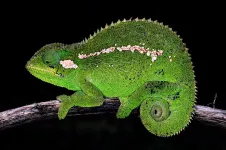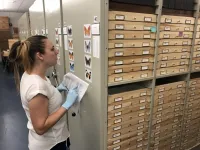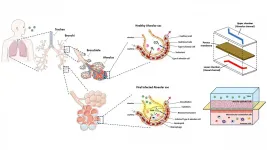It's an unexpected twist on coral reef symbiosis, said Rice University marine biologist Adrienne Correa, whose lab discovered coral predator feces are jam-packed with living symbiotic algae that corals depend on for survival. The discovery confirms that poop from coral-eating fish is an important environmental source of symbiotic dinoflagellate algae on coral reefs.
Correa said coral-eating predators are typically thought of as biting and weakening reef structures, thereby generating hiding spaces for other organisms and, ultimately, beach sand. In contrast, grazing fish that crop down bushy algae get the limelight for helping reefs maintain healthy coral cover.
"The message is, 'Move over grazers, it's not just you helping maintain coral dominance. These coral-eating fishes are probably helping too by spreading beneficial coral symbionts,'" she said.
Rice doctoral student Carsten Grupstra, lead author of the study in Animal Microbiome, said, "This tells us we don't really know all of the interactions that are happening on coral reefs, and some species may be important for coral reef conservation in ways that we haven't imagined."
In exchange for a sheltered life, dinoflagellates nourish their hosts by sharing the food they photosynthesize. Millions of symbionts live in each coral, but some corals aren't born with dinoflagellates. They acquire them as babies.
"When many baby corals settle on the reef bottom, they have to get their symbionts from the environment," Correa said. "We've seen symbionts in the water and sediments and on big bushy algae on reefs, but we haven't really looked at how those microorganisms get to all those places."
In thinking about ways symbionts might be distributed on reefs, Grupstra, Correa, graduate student Lauren Howe-Kerr and undergraduate Kristen Rabbitt were inspired by studies of pollinating insects and birds that pass beneficial bacteria between flowering plants. Like pollinating bees that visit many flowers in a single flight, coral-eating fish constantly crisscross reefs and interact with many corals each day.
"Most of them take small bites of adult corals and don't kill the colonies they're eating," Grupstra explained.
During an expedition to the Mo'orea Coral Reef Long-term Ecological Research station in French Polynesia, Grupstra, Howe-Kerr, Rabbitt and Correa followed fish that ate different amounts of coral and algae. Using underwater clipboards, they made note of what the fish ate and where and how often they defecated. Grupstra also gathered samples of predator and grazer poop to examine in the lab.
"I left some samples in the window sill for a couple of weeks in Mo'orea" he said. "Later, when I started looking at them (under a microscope), I found tons of symbionts. A lot of them were swimming around and some were dividing."
The sheer number of live symbionts was both unexpected and potentially important in the larger picture of reef ecology, Correa said. While symbionts had previously been reported in feces from a limited number of coral predators, it was unclear how many of them were alive and potentially useful to corals. Her group found high concentrations of live symbionts in the feces of a diverse group of coral predators. For example, the Rice team estimated that two species at the Mo'orea research station, Chaetodon ornatissimus and Chaetodon reticulatus, each spread about 100 million live symbionts per day over an area of reef approximately the size of six parking spaces.
"This expands how we can think about the roles of coral-eating fishes on reefs," Correa said. "They don't just break up reef frameworks. They also disperse symbionts that corals and other organisms need."
The knowledge that predator poop creates "hotspots" of live symbiotic dinoflagellates on reefs raises questions about whether and how coral use them. Correa's team has planned a series of experiments on both juvenile and stressed adult corals to determine how readily they absorb beneficial symbionts from the poop.
She said many questions remain about how and how frequently corals take up symbionts from the environment. For example, marine biologists widely agree that many coral babies get their symbionts from the environment, but it is unclear how often adults do this and under what conditions. Better understanding symbiont uptake could lead to new methods to help reefs recover from stress-induced "bleaching."
Bleaching occurs when stressed corals expel their symbionts en masse, frequently leaving corals colorless, as the name implies. Bleaching events are increasingly common due to climate change. While some corals never recover from bleaching, others do, which raises the question of how bleached corals repopulate their symbiont communities. Grupstra and Correa are conducting research to find out whether contact with coral predator feces can improve bleaching recovery rates and long-term coral health.
INFORMATION:
The research was supported by the National Science Foundation (1635798, 1637396), the Wagoner Foreign Study Scholarship Program, the Lewis and Clark Fund for Exploration, the Garden Club of America Clara Carter Higgins Fund, the Explorer's Club Youth Activity Fund and an Early-Career Research Fellowship from the Gulf Research Program of the National Academies of Sciences, Engineering and Medicine (2000009651).
Links and resources:
The DOI of the Animal Microbiome paper is: 10.1186/s42523-021-00086-4
A copy of the paper is available at: https://doi.org/10.1186/s42523-021-00086-4
VIDEO is available at:
https://youtu.be/mDQZU4Tky-w
High-resolution IMAGES are available for download at:
https://news-network.rice.edu/news/files/2021/03/0322_GOODPOOP-mq-lg.jpg
CAPTION: Chaetodon lunulatus, a coral predator photographed in Mo'orea, French Polynesia, in October 2020. Rice University marine biologists discovered that the feces of coral-eating fish in Mo'orea contain high concentrations of live symbiotic algae that coral depend upon. (Photo by Alex Veglia/Rice University)
https://news-network.rice.edu/news/files/2021/03/0322_GOODPOOP-cg1-lg.jpg
CAPTION: Rice University graduate student Carsten Grupstra taking notes while following coral predator fish in Mo'orea, French Polynesia, in October 2020. (Photo by Alex Veglia/Rice University)
https://news-network.rice.edu/news/files/2021/03/0322_GOODPOOP-cg2-lg.jpg
CAPTION: Rice University graduate student Carsten Grupstra in Mo'orea, French Polynesia, in July 2019. (Photo by Kristen Rabbitt/Rice University)
https://news-network.rice.edu/news/files/2021/03/0322_GOODPOOP-gp94-lg.jpg
CAPTION: Rice University marine biologists (from left) Adrienne Correa, Kristen Rabbitt, Carsten Grupstra and Lauren Howe-Kerr in March 2021. (Photo by Brandon Martin/Rice University)
https://news-network.rice.edu/news/files/2021/03/0322_GOODPOOP-kr120-lg.jpg
CAPTION: Rice University undergraduate Kristen Rabbitt works in the Correa Lab in March 2021. Rabbitt spent several weeks conducting research on coral reefs in Mo'orea, French Polynesia, in 2019 and co-authored a peer-reviewed study about the discovery of high concentrations of live symbiotic algae in the feces of coral-eating fish in Mo'orea. (Photo by Brandon Martin/Rice University)
https://news-network.rice.edu/news/files/2021/03/0322_GOODPOOP-ac115-lg.jpg
CAPTION: Marine biologist Adrienne Correa is an assistant professor of biosciences at Rice University. (Photo by Brandon Martin/Rice University)
This release can be found online at news.rice.edu.
Follow Rice News and Media Relations via Twitter @RiceUNews.
Located on a 300-acre forested campus in Houston, Rice University is consistently ranked among the nation's top 20 universities by U.S. News & World Report. Rice has highly respected schools of Architecture, Business, Continuing Studies, Engineering, Humanities, Music, Natural Sciences and Social Sciences and is home to the Baker Institute for Public Policy. With 3,978 undergraduates and 3,192 graduate students, Rice's undergraduate student-to-faculty ratio is just under 6-to-1. Its residential college system builds close-knit communities and lifelong friendships, just one reason why Rice is ranked No. 1 for lots of race/class interaction and No. 1 for quality of life by the Princeton Review. Rice is also rated as a best value among private universities by Kiplinger's Personal Finance.
